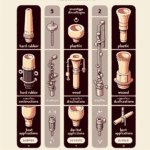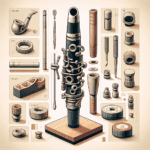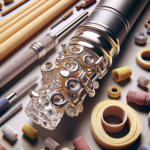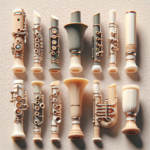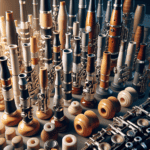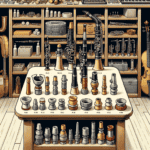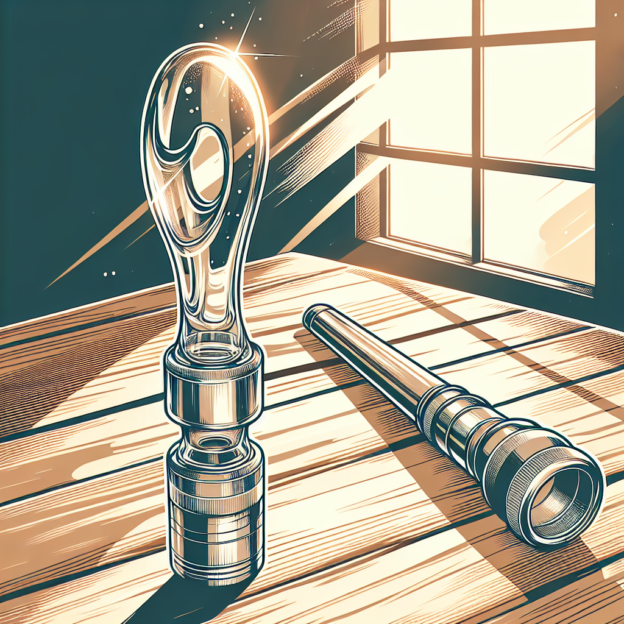When choosing a clarinet mouthpiece, have you considered more than just how it affects your sound? Many musicians don't realize how important the mouthpiece material's resistance to corrosion can be for their playing experience. The materials used in your mouthpiece can significantly influence your instrument's performance over time, from its lifespan to its cleanliness. Which materials are best suited for this, and why do some wear down faster than others? Let's explore this topic in a way that's easy for both newcomers and experienced players to understand.
Understanding Mouthpiece Materials
Today's mouthpieces are typically made from hard rubber (also known as ebonite), plastic, or crystal glass. Each material affects the sound differently, producing tones that range from rich and warm to bright and sharp. However, the material's durability is just as important as its sound quality.
| Material | Sound Quality | Durability | Corrosion Resistance |
|---|---|---|---|
| Hard Rubber | Deep, rich timbre | Moderate | Low |
| Plastic | Bright, less flexible | High | High |
| Crystal Glass | Pristine, clear | Very High | Very High |
Hard rubber is popular among musicians for its deep, rich sound. However, it can discolor and even corrode over time due to exposure to saliva, cleaning products, or even strong light. If you have a vintage Martin Freres clarinet mouthpiece, you might notice a greenish tint appearing – that's oxidation at work. While this doesn't immediately affect how it plays, some musicians find it unappealing.
Plastic mouthpieces are lightweight, affordable, and great for beginners. They're quite resistant to corrosion, but they scratch easily, which can disrupt airflow around the facing and affect your playing. Also, plastic doesn't offer the same tonal flexibility as ebonite.
For those seeking perfect sound and appearance, crystal mouthpieces are an excellent choice. They're extremely durable and don't corrode like other materials (glass doesn't rust, after all). However, they're not indestructible – one drop could mean a trip to the repair shop or even a complete replacement.
What Causes Corrosion or Degradation?
The main culprit is moisture. Your saliva contains enzymes, acids, and bacteria that slowly eat away at certain materials. Rough cleaning tools can also cause damage. Using cleaning chemicals that aren't suitable for your mouthpiece's material can speed up wear and tear.
Heat is another factor to consider. Rubber mouthpieces can warp or deteriorate in extreme temperatures, even if left in a hot car. In the world of woodwinds, taking care of your mouthpiece is absolutely essential.
How to Protect Your Mouthpiece
Want to keep your mouthpiece in great condition? Here are some tips:
- Rinse after each use. Every time! A quick rinse with warm (not hot) water removes saliva and dirt before they can settle.
- Use a soft brush. Get a brush made for woodwind care to clean hard-to-reach areas.
- Avoid harsh chemicals. Stick to mild, soapy water and avoid abrasive cleaners that could damage your mouthpiece.
- Dry thoroughly. Moisture is your biggest enemy, so make sure your mouthpiece is completely dry after cleaning.
- Store properly. Whether in a pouch or on your clarinet, keep it away from dust, direct sunlight, and heat.
Selecting the Best Mouthpiece for You
While corrosion resistance is important, it's not the only factor to consider. You also need to think about how it plays, the tone you prefer, and your budget. A Martin Freres rubber mouthpiece might give you the warm, traditional sound you're after. If durability is your main concern, a high-quality plastic option could be perfect for daily practice or outdoor performances. If you like a smooth feel under your fingers, crystal could be ideal, though it comes at a higher price.
For young players still developing their style, starting with a sturdy plastic mouthpiece is a good choice. As you improve your technique, you can explore different materials.
Taking Care of Metal Parts
While many clarinet mouthpieces are entirely non-metallic, some have small metal parts. Gold or nickel-plated ligature screws are common examples. Gold plating is fairly resistant to corrosion but needs gentle handling. Nickel plating is quite durable but can tarnish in humid conditions.
The solution? Regularly wipe these parts with a soft, lint-free cloth to prevent degradation. No special tools required!
How Corrosion Affects Sound Quality
Does visible wear or corrosion change your sound? It depends. Corrosion itself doesn't always alter how your notes sound, but if it changes the facing, bore, or table of the mouthpiece, you might notice a difference. An uneven surface can cause inconsistent airflow, leading to squeaks or difficulty hitting certain notes.
These issues can be frustrating for any musician – and for listeners too. That's why taking care of your mouthpiece is so important to prevent problems later on.
In Conclusion
Choosing and maintaining the right clarinet mouthpiece takes some thought and effort – it's a crucial part of your instrument. Understanding how different materials behave and how corrosion resistance affects your mouthpiece's longevity is key to preserving your musical quality.
Next time you check your clarinet, give your mouthpiece some extra attention. Clean it, store it properly, and appreciate its important role. After all, your clarinet wouldn't make a sound without it!

